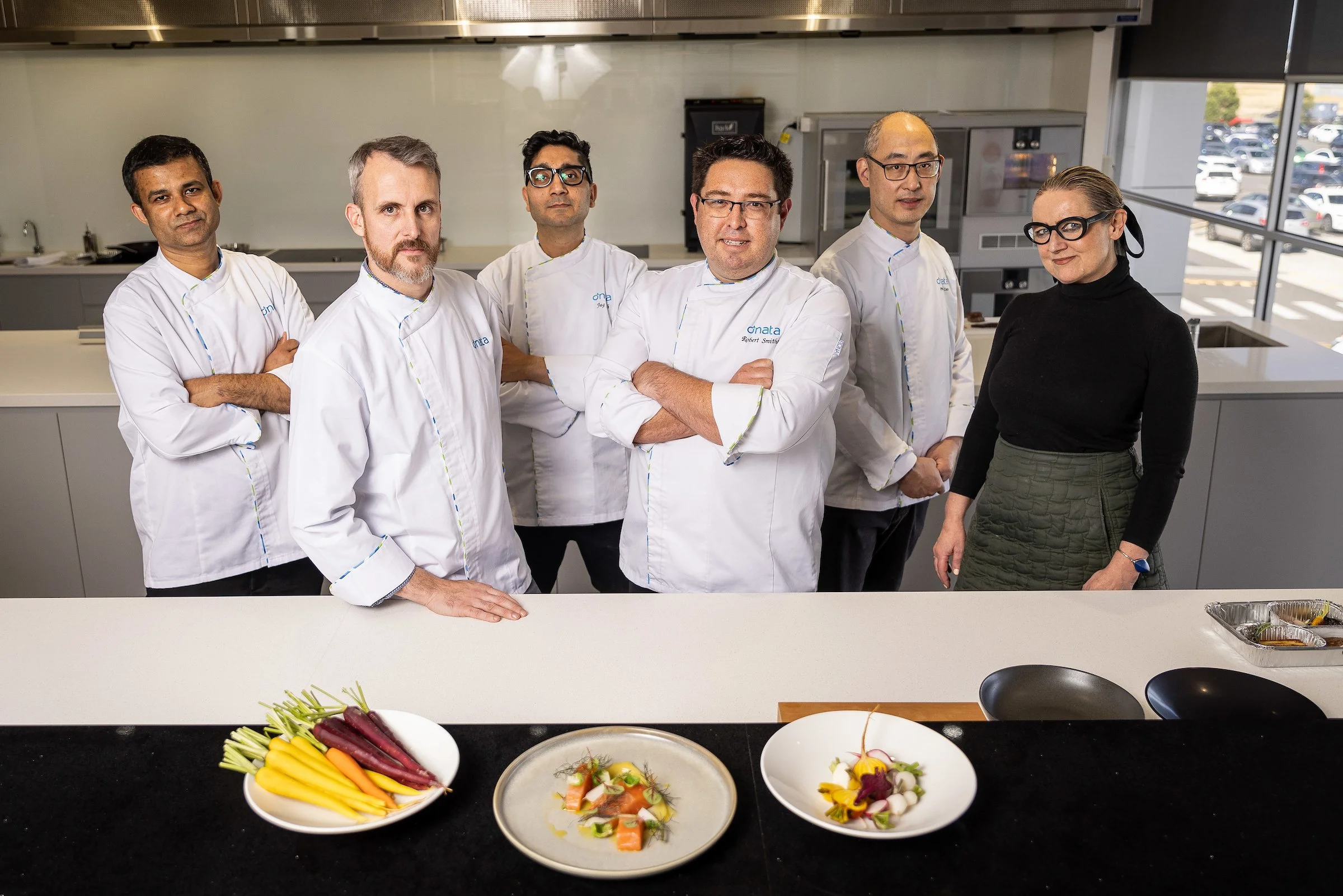Umami pick-up for plain in-flight fare
Award-winning Dnata Australia’s customer count is over 45 international and local airline customers including; Qantas and Jetstar.
2022 PAX International, Inflight Caterer of the Year Australasia
2022 – Onboard Hospitality, Industry Champions
2022 – Gold Coast Business Excellence Awards, Manufacturing Award
2021 – Onboard Hospitality, Industry Champions
TEMPTING tastebuds at 30,000 feet is no easy task, but companies like Dnata have found the answer. A lot has already been written and said about airline food, and certainly every airline wants to provide a great culinary experience for its passengers. This might seem fairly straightforward, but it’s no simple task when you consider preparing meals to be served at 30,000 feet in a pressurised cabin.
At companies like Dnata Australia, the world’s largest airline catering business, the chefs are acutely aware of the challenges they’re up against when producing meals that are to be served onboard an aircraft – and they have the recipes for success. Even before being boarded onto an aircraft, airline meals have quite the journey from kitchen to plane.
Each of these steps – preparation, storage and transportation – can have an effect on the taste and flavour of the dish, and that’s where airline catering culinary experts come in. Furthermore, in what represents a challenge as old as the airline catering industry itself, dry air, high-altitude pressure, and even the noise of the aircraft contributes to creating a cabin environment that diminishes a passenger’s ability to taste, causing food to seem blander than it really is.
To counteract this and ensure that flavour, quality and freshness remain intact, Dnata chefs use ingredients and techniques to enhance meals, giving airline passengers a dining experience that will please the palate. This means exploring new preparation processes with flavours that can withstand the elements without adding salt.
Chefs use for an example flavour-boosting methods such as seasonings, marinades and sauces – and even the exciting flavour profile known as umami finds its way into their menus. Originating in Japan, umami refers to the pleasant and savoury taste found in foods like tomatoes, Parmesan cheese and mushrooms. Making increased and creative use of such ingredients is a major breakthrough for airline catering.
And who knows and airlines like British Airways who Dnata Australia cater for recently created a ‘Sound Bite’ soundtrack, based on an Oxford University study which revealed that listening to certain music selections can alter the taste of specific food and drink, may give even further heights to what the chefs cook up in their airline kitchens.
At the day’s end, we’re done with the Menu Presentation afternoon, followed with some action and creative instead of food specification style.
IMAGE BY Ben Weinstein.
Main meal - Seared Cowra Lamb loin with puree of Butternut, roasted Roscoff onion, potato and onion Presse, Petit Bouche heirloom vegetables, Red Elk and Jus.
Image: BY Ben Weinstein.
The science of gourmet dining at 30,000 ft – what foods work best and why/ pairing food and wine at high altitudes?
The science to successful gourmet dining at 30,000 ft starts fairly similar to a fine dining restaurant, with a focus on high quality seasonal produce that’s prepared well, seasoned correctly, served with an exceptional level of detail.
Due to the limited space and equipment available on most aircraft and the potential for turbulence, and the fact that food is reheated, finished and plated – not cooked – ingredient selection is paramount. Consideration must be given to types of cuts, quality, and freshness, to ensure they plate well onboard.
We’ve seen a trend in recent years of customers wanting to move away from traditional robust dishes with heavy sauces, to lighter zesty dishes with layers of texture and freshness, coupled with the focus on quality, rather than quantity. The trend is unique to airlines, and shows passengers expect the same level of quality from inflight dining, as what they would any restaurant. Inflight dining has become akin to a restaurant in the sky.




